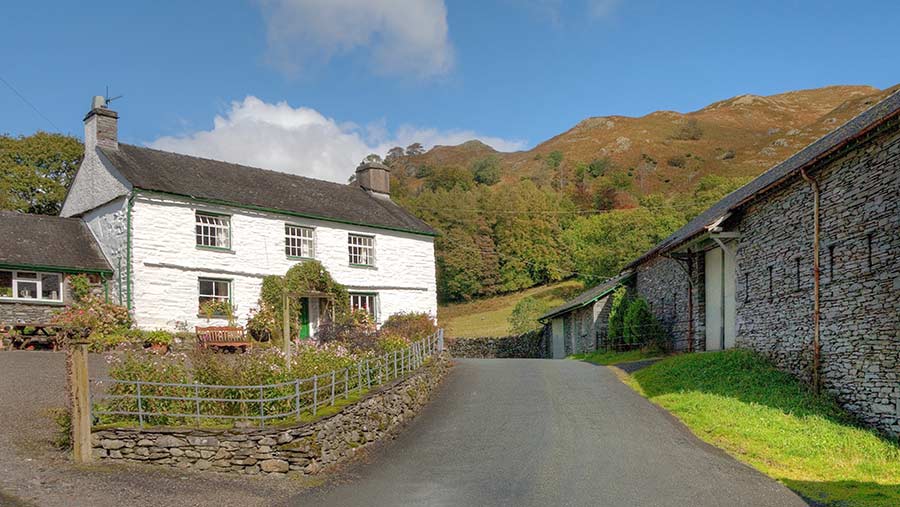Agricultural Occupancy Conditions explained and should they stay
 © Ingram Image
© Ingram Image Thousands of properties in rural areas across the UK have restrictions on what type of person can occupy them, reducing their potential value and their demand from potential buyers.
Andrew Dodds, associate partner at Stags, says these conditions tend to be found in properties built since the 1960s, although barn conversions are currently not subject to them.
“Of all the farms we sell each year, 10% to 15% have these ties,” he says. “We do sell properties with ties but about 25% of the time there isn’t a market for them.”
The conditions can be removed but the process will take a significant amount of time, so affected farmers are advised to plan well in advance.
See also: How Class Q development rights are working in practice
What are they?
An Agricultural Occupancy Condition is generally known to determine that the person who lives in the property must be working, or retired from working, in agriculture or forestry in the local area.
However, frustratingly, each local planning authority will word and enact its conditions slightly differently, says Mr Dodds.
Ties were brought in originally to aid farmers in gaining planning consent to build houses on their land, which otherwise would not have been approved under general policy.
Ensuring that the property is linked to agriculture or occupied by agricultural workers reduces market demand and makes them more affordable.
How do they affect property owners?
“If you’re buying a 200- to 300-acre farm, it’s pretty straightforward to comply with the agricultural condition,” says Mr Dodds.
“Issues arise when a dwelling has been added to the farm and that is being sold off separately with five or 10 acres.
“To sell that is tricky because the new occupant has to be involved in farming or forestry, which is difficult with so few acres.”
However, this could be a viable option for someone who has retired from the agricultural sector, he added.
While the condition will have an impact on the valuation of a property and how much interest it will attract on the open market, this will vary depending on the property and the area.
How can the condition be removed?
- Non-compliance
If over a period of 10 years the occupier has not complied with the agricultural occupancy condition, and can prove this to the local authority with satisfactory evidence, the condition can be temporarily deactivated.
However, if someone subsequently buys the property and complies with the terms, the condition re-enacts.
- No market
If the owner advertises the property at a reasonable asking price for about 12 to 18 months and is unable to find a buyer, they can apply to the local authority for the condition to be removed, stating that there is no longer demand for an agricultural dwelling on the holding or in the area.
- Non-accordance
If the property was not built in accordance with the original planning application, the owner can apply for a Certificate of Lawful Use, saying no condition should be applied – although this is rare.
Should the condition be removed?
The decision about whether to remove the occupancy condition should be taken on a case-by-case basis, with the owner judging how strict it is and how much it will affect them in the future, Mr Dodds says.
“If they are farming a commercial agricultural unit, are complying with the condition, and want to continue this way, there is no need to do anything,” he says.
“It’s worth taking advice well in advance of selling the property to look at your options, as keeping the condition will have an impact on prices.
“It is worth remembering that they were originally added to make properties cheaper and improve the likelihood of getting planning consent.”
Depending on the route chosen to remove the condition, owners can expect to pay planning consultant fees and advertising and marketing costs, although these will be fairly insignificant compared with the subsequent increase in market value.
